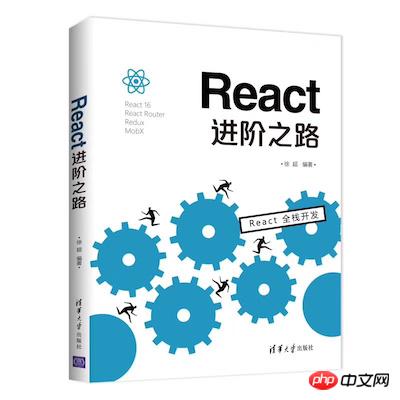React高阶组件使用详解
高阶组件的定义类比于高阶函数的定义。高阶函数接收函数作为参数,并且返回值也是一个函数。类似的,高阶组件接收React组件作为参数,并且返回一个新的React组件。高阶组件本质上也是一个函数,并不是一个组件,这一点一定不要弄错。
为什么React引入高阶组件的概念?它到底有何威力?让我们先通过一个简单的例子说明一下。
假设有一个组件MyComponent,需要从LocalStorage中获取数据,然后渲染数据到界面。我们可以这样写组件代码:
import React, { Component } from 'react'
class MyComponent extends Component {
componentWillMount() {
let data = localStorage.getItem('data');
this.setState({data});
}
render() {
return <p>{this.state.data}</p>
}
}代码很简单,但当有其他组件也需要从LocalStorage中获取同样的数据展示出来时,需要在每个组件都重复componentWillMount中的代码,这显然是很冗余的。下面让我们来看看使用高阶组件可以怎么改写这部分代码。
import React, { Component } from 'react'
function withPersistentData(WrappedComponent) {
return class extends Component {
componentWillMount() {
let data = localStorage.getItem('data');
this.setState({data});
}
render() {
// 通过{...this.props} 把传递给当前组件的属性继续传递给被包装的组件WrappedComponent
return <WrappedComponent data={this.state.data} {...this.props} />
}
}
}
class MyComponent2 extends Component {
render() {
return <p>{this.props.data}</p>
}
}
const MyComponentWithPersistentData = withPersistentData(MyComponent2)withPersistentData就是一个高阶组件,它返回一个新的组件,在新组件的componentWillMount中统一处理从LocalStorage中获取数据的逻辑,然后将获取到的数据以属性的方式传递给被包装的组件WrappedComponent,这样在WrappedComponent中就可以直接使用this.props.data获取需要展示的数据了,如MyComponent2所示。当有其他的组件也需要这段逻辑时,继续使用withPersistentData这个高阶组件包装这些组件就可以了。
通过这个例子,可以看出高阶组件的主要功能是封装并分离组件的通用逻辑,让通用逻辑在组件间更好地被复用。高阶组件的这种实现方式,本质上是一个装饰者设计模式。
高阶组件的参数并非只能是一个组件,它还可以接收其他参数。例如,组件MyComponent3需要从LocalStorage中获取key等于name的数据,而不是上面例子中写死的key等于data的数据,withPersistentData这个高阶组件就不满足我们的需求了。我们可以让它接收额外的一个参数,来决定从LocalStorage中获取哪个数据:
import React, { Component } from 'react'
function withPersistentData(WrappedComponent, key) {
return class extends Component {
componentWillMount() {
let data = localStorage.getItem(key);
this.setState({data});
}
render() {
// 通过{...this.props} 把传递给当前组件的属性继续传递给被包装的组件WrappedComponent
return <WrappedComponent data={this.state.data} {...this.props} />
}
}
}
class MyComponent2 extends Component {
render() {
return <p>{this.props.data}</p>
}
//省略其他逻辑...
}
class MyComponent3 extends Component {
render() {
return <p>{this.props.data}</p>
}
//省略其他逻辑...
}
const MyComponent2WithPersistentData = withPersistentData(MyComponent2, 'data');
const MyComponent3WithPersistentData = withPersistentData(MyComponent3, 'name');新版本的withPersistentData就满足我们获取不同key的值的需求了。高阶组件中的参数当然也可以是函数,我们将在下一节进一步说明。
3. 进阶用法
高阶组件最常见的函数签名形式是这样的:
HOC([param])([WrappedComponent])
用这种形式改写withPersistentData,如下:
import React, { Component } from 'react'
const withPersistentData = (key) => (WrappedComponent) => {
return class extends Component {
componentWillMount() {
let data = localStorage.getItem(key);
this.setState({data});
}
render() {
// 通过{...this.props} 把传递给当前组件的属性继续传递给被包装的组件WrappedComponent
return <WrappedComponent data={this.state.data} {...this.props} />
}
}
}
class MyComponent2 extends Component {
render() {
return <p>{this.props.data}</p>
}
//省略其他逻辑...
}
class MyComponent3 extends Component {
render() {
return <p>{this.props.data}</p>
}
//省略其他逻辑...
}
const MyComponent2WithPersistentData = withPersistentData('data')(MyComponent2);
const MyComponent3WithPersistentData = withPersistentData('name')(MyComponent3);实际上,此时的withPersistentData和我们最初对高阶组件的定义已经不同。它已经变成了一个高阶函数,但这个高阶函数的返回值是一个高阶组件。HOC([param])([WrappedComponent])这种形式中,HOC([param])才是真正的高阶组件,我们可以把它看成高阶组件的变种形式。这种形式的高阶组件因其特有的便利性——结构清晰(普通参数和被包裹组件分离)、易于组合,大量出现在第三方库中。如react-redux中的connect就是一个典型。connect的定义如下:
connect([mapStateToProps], [mapDispatchToProps], [mergeProps], [options])(WrappedComponent)
这个函数会将一个React组件连接到Redux 的 store。在连接的过程中,connect通过函数类型的参数mapStateToProps,从全局store中取出当前组件需要的state,并把state转化成当前组件的props;同时通过函数类型的参数mapDispatchToProps,把当前组件用到的Redux的action creators,以props的方式传递给当前组件。
例如,我们把组件ComponentA连接到Redux上的写法类似于:
const ConnectedComponentA = connect(mapStateToProps, mapDispatchToProps)(ComponentA);
我们可以把它拆分来看:
// connect 是一个函数,返回值enhance也是一个函数 const enhance = connect(mapStateToProps, mapDispatchToProps); // enhance是一个高阶组件 const ConnectedComponentA = enhance(ComponentA);
当多个函数的输出和它的输入类型相同时,这些函数是很容易组合到一起使用的。例如,有f,g,h三个高阶组件,都只接受一个组件作为参数,于是我们可以很方便的嵌套使用它们:f( g( h(WrappedComponent) ) )。这里可以有一个例外,即最内层的高阶组件h可以有多个参数,但其他高阶组件必须只能接收一个参数,只有这样才能保证内层的函数返回值和外层的函数参数数量一致(都只有1个)。
例如我们将connect和另一个打印日志的高阶组件withLog联合使用:
const ConnectedComponentA = connect(mapStateToProps)(withLog(ComponentA));
这里我们定义一个工具函数:compose(...functions),调用compose(f, g, h) 等价于 (...args) => f(g(h(...args)))。用compose函数我们可以把高阶组件嵌套的写法打平:
const enhance = compose( connect(mapStateToProps), withLog ); const ConnectedComponentA = enhance(ComponentA);
像Redux等很多第三方库都提供了compose的实现,compose结合高阶组件使用,可以显著提高代码的可读性和逻辑的清晰度。
4.与父组件区别
有些同学可能会觉得高阶组件有些类似父组件的使用。例如,我们完全可以把高阶组件中的逻辑放到一个父组件中去执行,执行完成的结果再传递给子组件。从逻辑的执行流程上来看,高阶组件确实和父组件比较相像,但是高阶组件强调的是逻辑的抽象。高阶组件是一个函数,函数关注的是逻辑;父组件是一个组件,组件主要关注的是UI/DOM。如果逻辑是与DOM直接相关的,那么这部分逻辑适合放到父组件中实现;如果逻辑是与DOM不直接相关的,那么这部分逻辑适合使用高阶组件抽象,如数据校验、请求发送等。
5. 注意事项
1)不要在组件的render方法中使用高阶组件,尽量也不要在组件的其他生命周期方法中使用高阶组件。因为高阶组件每次都会返回一个新的组件,在render中使用会导致每次渲染出来的组件都不相等(===),于是每次render,组件都会卸载(unmount),然后重新挂载(mount),既影响了效率,又丢失了组件及其子组件的状态。高阶组件最适合使用的地方是在组件定义的外部,这样就不会受到组件生命周期的影响了。
2)如果需要使用被包装组件的静态方法,那么必须手动拷贝这些静态方法。因为高阶组件返回的新组件,是不包含被包装组件的静态方法。hoist-non-react-statics可以帮助我们方便的拷贝组件所有的自定义静态方法。有兴趣的同学可以自行了解。
3)Refs不会被传递给被包装组件。尽管在定义高阶组件时,我们会把所有的属性都传递给被包装组件,但是ref并不会传递给被包装组件。如果你在高阶组件的返回组件中定义了ref,那么它指向的是这个返回的新组件,而不是内部被包装的组件。如果你希望获取被包装组件的引用,你可以把ref的回调函数定义成一个普通属性(给它一个ref以外的名字)。下面的例子就用inputRef这个属性名代替了常规的ref命名:
function FocusInput({ inputRef, ...rest }) {
return <input ref={inputRef} {...rest} />;
}
//enhance 是一个高阶组件
const EnhanceInput = enhance(FocusInput);
// 在一个组件的render方法中...
return (<EnhanceInput
inputRef={(input) => {
this.input = input
}
}>)
// 让FocusInput自动获取焦点
this.input.focus();下篇预告:
React 深入系列7:React 常用模式
我的新书《React进阶之路》已上市,请大家多多支持!
链接:京东 当当

React 深入系列,深入讲解了React中的重点概念、特性和模式等,旨在帮助大家加深对React的理解,以及在项目中更加灵活地使用React。
1. 基本概念
高阶组件是React 中一个很重要且比较复杂的概念,高阶组件在很多第三方库(如Redux)中都被经常使用。在项目中用好高阶组件,可以显著提高代码质量。
高阶组件的定义类比于高阶函数的定义。高阶函数接收函数作为参数,并且返回值也是一个函数。类似的,高阶组件接收React组件作为参数,并且返回一个新的React组件。高阶组件本质上也是一个函数,并不是一个组件,这一点一定不要弄错。
2. 应用场景
为什么React引入高阶组件的概念?它到底有何威力?让我们先通过一个简单的例子说明一下。
假设有一个组件MyComponent,需要从LocalStorage中获取数据,然后渲染数据到界面。我们可以这样写组件代码:
import React, { Component } from 'react'
class MyComponent extends Component {
componentWillMount() {
let data = localStorage.getItem('data');
this.setState({data});
}
render() {
return <p>{this.state.data}</p>
}
}代码很简单,但当有其他组件也需要从LocalStorage中获取同样的数据展示出来时,需要在每个组件都重复componentWillMount中的代码,这显然是很冗余的。下面让我们来看看使用高阶组件可以怎么改写这部分代码。
import React, { Component } from 'react'
function withPersistentData(WrappedComponent) {
return class extends Component {
componentWillMount() {
let data = localStorage.getItem('data');
this.setState({data});
}
render() {
// 通过{...this.props} 把传递给当前组件的属性继续传递给被包装的组件WrappedComponent
return <WrappedComponent data={this.state.data} {...this.props} />
}
}
}
class MyComponent2 extends Component {
render() {
return <p>{this.props.data}</p>
}
}
const MyComponentWithPersistentData = withPersistentData(MyComponent2)withPersistentData就是一个高阶组件,它返回一个新的组件,在新组件的componentWillMount中统一处理从LocalStorage中获取数据的逻辑,然后将获取到的数据以属性的方式传递给被包装的组件WrappedComponent,这样在WrappedComponent中就可以直接使用this.props.data获取需要展示的数据了,如MyComponent2所示。当有其他的组件也需要这段逻辑时,继续使用withPersistentData这个高阶组件包装这些组件就可以了。
通过这个例子,可以看出高阶组件的主要功能是封装并分离组件的通用逻辑,让通用逻辑在组件间更好地被复用。高阶组件的这种实现方式,本质上是一个装饰者设计模式。
高阶组件的参数并非只能是一个组件,它还可以接收其他参数。例如,组件MyComponent3需要从LocalStorage中获取key等于name的数据,而不是上面例子中写死的key等于data的数据,withPersistentData这个高阶组件就不满足我们的需求了。我们可以让它接收额外的一个参数,来决定从LocalStorage中获取哪个数据:
import React, { Component } from 'react'
function withPersistentData(WrappedComponent, key) {
return class extends Component {
componentWillMount() {
let data = localStorage.getItem(key);
this.setState({data});
}
render() {
// 通过{...this.props} 把传递给当前组件的属性继续传递给被包装的组件WrappedComponent
return <WrappedComponent data={this.state.data} {...this.props} />
}
}
}
class MyComponent2 extends Component {
render() {
return <p>{this.props.data}</p>
}
//省略其他逻辑...
}
class MyComponent3 extends Component {
render() {
return <p>{this.props.data}</p>
}
//省略其他逻辑...
}
const MyComponent2WithPersistentData = withPersistentData(MyComponent2, 'data');
const MyComponent3WithPersistentData = withPersistentData(MyComponent3, 'name');新版本的withPersistentData就满足我们获取不同key的值的需求了。高阶组件中的参数当然也可以是函数,我们将在下一节进一步说明。
3. 进阶用法
高阶组件最常见的函数签名形式是这样的:
HOC([param])([WrappedComponent])
用这种形式改写withPersistentData,如下:
import React, { Component } from 'react'
const withPersistentData = (key) => (WrappedComponent) => {
return class extends Component {
componentWillMount() {
let data = localStorage.getItem(key);
this.setState({data});
}
render() {
// 通过{...this.props} 把传递给当前组件的属性继续传递给被包装的组件WrappedComponent
return <WrappedComponent data={this.state.data} {...this.props} />
}
}
}
class MyComponent2 extends Component {
render() {
return <p>{this.props.data}</p>
}
//省略其他逻辑...
}
class MyComponent3 extends Component {
render() {
return <p>{this.props.data}</p>
}
//省略其他逻辑...
}
const MyComponent2WithPersistentData = withPersistentData('data')(MyComponent2);
const MyComponent3WithPersistentData = withPersistentData('name')(MyComponent3);实际上,此时的withPersistentData和我们最初对高阶组件的定义已经不同。它已经变成了一个高阶函数,但这个高阶函数的返回值是一个高阶组件。HOC([param])([WrappedComponent])这种形式中,HOC([param])才是真正的高阶组件,我们可以把它看成高阶组件的变种形式。这种形式的高阶组件因其特有的便利性——结构清晰(普通参数和被包裹组件分离)、易于组合,大量出现在第三方库中。如react-redux中的connect就是一个典型。connect的定义如下:
connect([mapStateToProps], [mapDispatchToProps], [mergeProps], [options])(WrappedComponent)
这个函数会将一个React组件连接到Redux 的 store。在连接的过程中,connect通过函数类型的参数mapStateToProps,从全局store中取出当前组件需要的state,并把state转化成当前组件的props;同时通过函数类型的参数mapDispatchToProps,把当前组件用到的Redux的action creators,以props的方式传递给当前组件。
例如,我们把组件ComponentA连接到Redux上的写法类似于:
const ConnectedComponentA = connect(mapStateToProps, mapDispatchToProps)(ComponentA);
我们可以把它拆分来看:
// connect 是一个函数,返回值enhance也是一个函数 const enhance = connect(mapStateToProps, mapDispatchToProps); // enhance是一个高阶组件 const ConnectedComponentA = enhance(ComponentA);
当多个函数的输出和它的输入类型相同时,这些函数是很容易组合到一起使用的。例如,有f,g,h三个高阶组件,都只接受一个组件作为参数,于是我们可以很方便的嵌套使用它们:f( g( h(WrappedComponent) ) )。这里可以有一个例外,即最内层的高阶组件h可以有多个参数,但其他高阶组件必须只能接收一个参数,只有这样才能保证内层的函数返回值和外层的函数参数数量一致(都只有1个)。
例如我们将connect和另一个打印日志的高阶组件withLog联合使用:
const ConnectedComponentA = connect(mapStateToProps)(withLog(ComponentA));
这里我们定义一个工具函数:compose(...functions),调用compose(f, g, h) 等价于 (...args) => f(g(h(...args)))。用compose函数我们可以把高阶组件嵌套的写法打平:
const enhance = compose( connect(mapStateToProps), withLog ); const ConnectedComponentA = enhance(ComponentA);
像Redux等很多第三方库都提供了compose的实现,compose结合高阶组件使用,可以显著提高代码的可读性和逻辑的清晰度。
4.与父组件区别
有些同学可能会觉得高阶组件有些类似父组件的使用。例如,我们完全可以把高阶组件中的逻辑放到一个父组件中去执行,执行完成的结果再传递给子组件。从逻辑的执行流程上来看,高阶组件确实和父组件比较相像,但是高阶组件强调的是逻辑的抽象。高阶组件是一个函数,函数关注的是逻辑;父组件是一个组件,组件主要关注的是UI/DOM。如果逻辑是与DOM直接相关的,那么这部分逻辑适合放到父组件中实现;如果逻辑是与DOM不直接相关的,那么这部分逻辑适合使用高阶组件抽象,如数据校验、请求发送等。
5. 注意事项
1)不要在组件的render方法中使用高阶组件,尽量也不要在组件的其他生命周期方法中使用高阶组件。因为高阶组件每次都会返回一个新的组件,在render中使用会导致每次渲染出来的组件都不相等(===),于是每次render,组件都会卸载(unmount),然后重新挂载(mount),既影响了效率,又丢失了组件及其子组件的状态。高阶组件最适合使用的地方是在组件定义的外部,这样就不会受到组件生命周期的影响了。
2)如果需要使用被包装组件的静态方法,那么必须手动拷贝这些静态方法。因为高阶组件返回的新组件,是不包含被包装组件的静态方法。hoist-non-react-statics可以帮助我们方便的拷贝组件所有的自定义静态方法。有兴趣的同学可以自行了解。
3)Refs不会被传递给被包装组件。尽管在定义高阶组件时,我们会把所有的属性都传递给被包装组件,但是ref并不会传递给被包装组件。如果你在高阶组件的返回组件中定义了ref,那么它指向的是这个返回的新组件,而不是内部被包装的组件。如果你希望获取被包装组件的引用,你可以把ref的回调函数定义成一个普通属性(给它一个ref以外的名字)。下面的例子就用inputRef这个属性名代替了常规的ref命名:
function FocusInput({ inputRef, ...rest }) {
return <input ref={inputRef} {...rest} />;
}
//enhance 是一个高阶组件
const EnhanceInput = enhance(FocusInput);
// 在一个组件的render方法中...
return (<EnhanceInput
inputRef={(input) => {
this.input = input
}
}>)
// 让FocusInput自动获取焦点
this.input.focus();相信看了本文案例你已经掌握了方法,更多精彩请关注php中文网其它相关文章!
推荐阅读:
react实现选中li高亮步骤详解
EasyCanvas绘图库在Pixeler项目开发中使用实战总结
以上是React高阶组件使用详解的详细内容。更多信息请关注PHP中文网其他相关文章!

热AI工具

Undresser.AI Undress
人工智能驱动的应用程序,用于创建逼真的裸体照片

AI Clothes Remover
用于从照片中去除衣服的在线人工智能工具。

Undress AI Tool
免费脱衣服图片

Clothoff.io
AI脱衣机

AI Hentai Generator
免费生成ai无尽的。

热门文章

热工具

记事本++7.3.1
好用且免费的代码编辑器

SublimeText3汉化版
中文版,非常好用

禅工作室 13.0.1
功能强大的PHP集成开发环境

Dreamweaver CS6
视觉化网页开发工具

SublimeText3 Mac版
神级代码编辑软件(SublimeText3)

热门话题
 crystaldiskmark是什么软件?-crystaldiskmark如何使用?
Mar 18, 2024 pm 02:58 PM
crystaldiskmark是什么软件?-crystaldiskmark如何使用?
Mar 18, 2024 pm 02:58 PM
CrystalDiskMark是一款适用于硬盘的小型HDD基准测试工具,可以快速测量顺序和随机读/写速度。接下来就让小编为大家介绍一下CrystalDiskMark,以及crystaldiskmark如何使用吧~一、CrystalDiskMark介绍CrystalDiskMark是一款广泛使用的磁盘性能测试工具,用于评估机械硬盘和固态硬盘(SSD)的读写速度和随机I/O性能。它是一款免费的Windows应用程序,并提供用户友好的界面和各种测试模式来评估硬盘驱动器性能的不同方面,并被广泛用于硬件评
 foobar2000怎么下载?-foobar2000怎么使用
Mar 18, 2024 am 10:58 AM
foobar2000怎么下载?-foobar2000怎么使用
Mar 18, 2024 am 10:58 AM
foobar2000是一款能随时收听音乐资源的软件,各种音乐无损音质带给你,增强版本的音乐播放器,让你得到更全更舒适的音乐体验,它的设计理念是将电脑端的高级音频播放器移植到手机上,提供更加便捷高效的音乐播放体验,界面设计简洁明了易于使用它采用了极简的设计风格,没有过多的装饰和繁琐的操作能够快速上手,同时还支持多种皮肤和主题,根据自己的喜好进行个性化设置,打造专属的音乐播放器支持多种音频格式的播放,它还支持音频增益功能根据自己的听力情况调整音量大小,避免过大的音量对听力造成损害。接下来就让小编为大
 网易邮箱大师怎么用
Mar 27, 2024 pm 05:32 PM
网易邮箱大师怎么用
Mar 27, 2024 pm 05:32 PM
网易邮箱,作为中国网民广泛使用的一种电子邮箱,一直以来以其稳定、高效的服务赢得了用户的信赖。而网易邮箱大师,则是专为手机用户打造的邮箱软件,它极大地简化了邮件的收发流程,让我们的邮件处理变得更加便捷。那么网易邮箱大师该如何使用,具体又有哪些功能呢,下文中本站小编将为大家带来详细的内容介绍,希望能帮助到大家!首先,您可以在手机应用商店搜索并下载网易邮箱大师应用。在应用宝或百度手机助手中搜索“网易邮箱大师”,然后按照提示进行安装即可。下载安装完成后,我们打开网易邮箱账号并进行登录,登录界面如下图所示
 百度网盘app怎么用
Mar 27, 2024 pm 06:46 PM
百度网盘app怎么用
Mar 27, 2024 pm 06:46 PM
在如今云存储已经成为我们日常生活和工作中不可或缺的一部分。百度网盘作为国内领先的云存储服务之一,凭借其强大的存储功能、高效的传输速度以及便捷的操作体验,赢得了广大用户的青睐。而且无论你是想要备份重要文件、分享资料,还是在线观看视频、听取音乐,百度网盘都能满足你的需求。但是很多用户们可能对百度网盘app的具体使用方法还不了解,那么这篇教程就将为大家详细介绍百度网盘app如何使用,还有疑惑的用户们就快来跟着本文详细了解一下吧!百度云网盘怎么用:一、安装首先,下载并安装百度云软件时,请选择自定义安装选
 BTCC教学:如何在BTCC交易所绑定使用MetaMask钱包?
Apr 26, 2024 am 09:40 AM
BTCC教学:如何在BTCC交易所绑定使用MetaMask钱包?
Apr 26, 2024 am 09:40 AM
MetaMask(中文也叫小狐狸钱包)是一款免费的、广受好评的加密钱包软件。目前,BTCC已支持绑定MetaMask钱包,绑定后可使用MetaMask钱包进行快速登入,储值、买币等,且首次绑定还可获得20USDT体验金。在BTCCMetaMask钱包教学中,我们将详细介绍如何注册和使用MetaMask,以及如何在BTCC绑定并使用小狐狸钱包。MetaMask钱包是什么?MetaMask小狐狸钱包拥有超过3,000万用户,是当今最受欢迎的加密货币钱包之一。它可免费使用,可作为扩充功能安装在网络
 教你使用 iOS 17.4「失窃设备保护」新进阶功能
Mar 10, 2024 pm 04:34 PM
教你使用 iOS 17.4「失窃设备保护」新进阶功能
Mar 10, 2024 pm 04:34 PM
Apple在周二推出了iOS17.4更新,为iPhone带来了一系列新功能和修复。这次更新包括了全新的表情符号,同时欧盟用户也能够下载其他应用商店。此外,更新还加强了对iPhone安全性的控制,引入了更多的「失窃设备保护」设置选项,为用户提供更多选择和保障。"iOS17.3首次引入了“失窃设备保护”功能,为用户的敏感资料增加了额外的安全保障。当用户不在家等熟悉地点时,该功能要求用户首次输入生物特征信息,并在一小时后再次输入信息才能访问和更改某些数据,如修改AppleID密码或关闭失窃设备保护功能
 小米汽车app怎么用
Apr 01, 2024 pm 09:19 PM
小米汽车app怎么用
Apr 01, 2024 pm 09:19 PM
小米汽车软件提供远程车控功能,让用户可以通过手机或电脑远程控制车辆,例如开关车辆的门窗、启动引擎、控制车辆的空调和音响等,下文就是这个软件的使用及内容,一起了解下吧。小米汽车app功能及使用方法大全1、小米汽车app在3月25日上线苹果AppStore,现在安卓手机的应用商店中也可以下载了;购车:了解小米汽车核心亮点和技术参数,可预约试驾、配置订购您的小米汽车,支持在线处理提车待办事项。3、社区:了解小米汽车品牌资讯,交流用车体验,分享精彩车生活;4、车控:手机就是遥控器,远程控制,实时安防,轻
 唧唧down是什么?-唧唧down怎么用
Mar 18, 2024 am 11:46 AM
唧唧down是什么?-唧唧down怎么用
Mar 18, 2024 am 11:46 AM
唧唧Down也可以叫做JJDown,这是专门为哔哩哔哩打造的一个视频下载工具,但是很多小伙伴对这个软件不了解,今天就让小编为大家解答一下唧唧down是什么?唧唧down怎么使用吧。一、唧唧down的由来唧唧down起源于2014年,是一个非常老牌的下载视频软件,界面采用Win10磁贴风格,简洁美观,操作方便。唧娜是唧唧down的看板娘,画师是あさひクロイ。唧唧down一直致力于为用户提供最好的下载体验,不断更新和优化软件,解决各种问题和bug,增加新的功能和特色。唧唧Down的功能唧唧Down是






